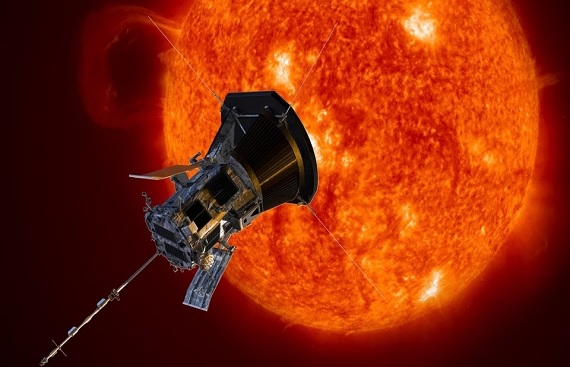ISRO's Aditya L1 satellite captured an X-ray image of a benign solar flare
By
siliconindia | Wednesday, 08 November 2023, 09:33 Hrs

India's first solar observatory, Aditya-L1, is currently en route to the L1 point to study the Sun. According to ISRO, the spacecraft has already detected high-energy X-rays emitted by the Sun and observed a "benign" solar flare. The agency also confirmed that the observatory will reach its destination and begin orbiting the L1 point in early January.
The HEL1OS (High Energy L1 Orbiting X-ray Spectrometer) is a unique device that can detect X-rays emitted by the Sun, which are invisible to the naked eye. The device is a crucial component of the Aditya-L1 mission, a satellite launched by the Indian space agency ISRO to explore and study the Sun. By using HEL1OS, scientists hope to gain a deeper understanding of the Sun and its behavior.
The Sun is not always the same. Sometimes, it has big bursts of energy that make it very bright and hot. These bursts are called solar flares, and they can affect the Earth and us. Solar flares can cause problems with electricity, satellites, and communication. They can also make beautiful lights in the sky, called auroras.
Solar flares happen when the Sun lets out a lot of energy in a short time. This energy can be in different forms, like light, heat, and particles. Some of these forms we can see, but some we cannot. HEL1OS can see the ones we cannot, like the hard X-rays. Hard X-rays are very high-energy rays that can tell us a lot about how solar flares happen and what they do.
To observe the hard X-rays emitted by the Sun, HEL1OS utilizes two distinct types of detectors - CdTe (Cadmium Telluride) and CZT (Cadmium Zinc Telluride). These detectors are made of specialized materials capable of transforming the hard X-rays into measurable signals, which scientists can then study.
The HEL1OS instrument was created by the Space Astronomy Group at the U.R. Rao Satellite Centre in Bengaluru, with assistance from various departments within the center. It was first powered on October 27th, 2023, and has since been observing the Sun for any signs of hard X-ray activity.
